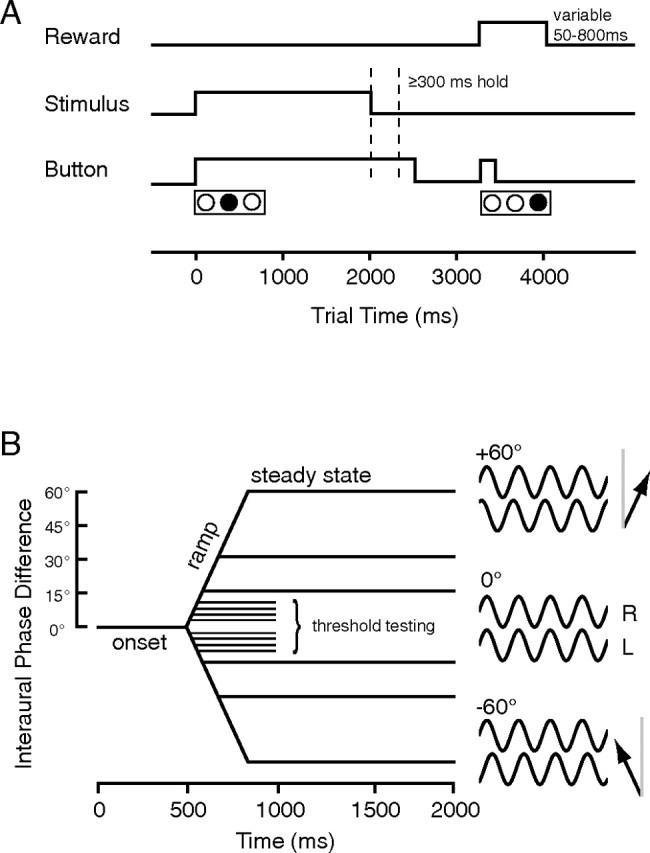Figure 1.

Macaques discriminated the direction of IPD shifts away from midline. A, The animal initiated a behaving trial by pressing and holding the center of three buttons (bottom trace). The button was held through the duration of the sound (middle trace) plus a 300 ms hold time, after which he could release the center button and press the right or left button to indicate the direction of IPD shift. Correct responses earned a liquid reward of varying size (top trace; see Materials and Methods). B, Pure-tone dynamic IPD stimuli originated at 0° IPD (0–500 ms), then linearly ramped to a second steady-state IPD [≤60° phase lead at left (L) or right (R) ear]. A restricted range (±15°) near the midline was used for threshold determination, and a wider range (±60°) and longer steady state were used during physiological behaving/passive comparisons. Arrows on the right depict the apparent direction of origin on the horizon (25° relative to gray midline) of a 1000 Hz tone leading in phase by 60° at the right ear (top icon) or left ear (bottom icon).
